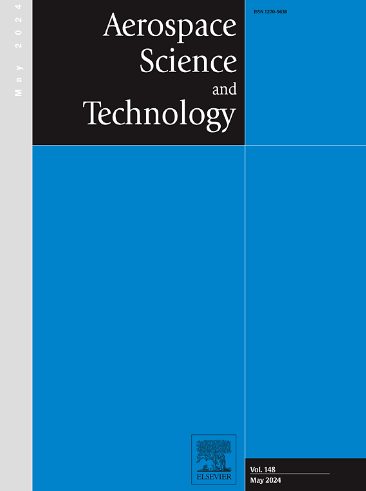基于异型端壁横流控制的定量三维逆向设计规则
IF 5
1区 工程技术
Q1 ENGINEERING, AEROSPACE
引用次数: 0
摘要
异型端壁为涡轮机和压缩机的端壁流量控制提供了一种新颖而有效的解决方案。然而,在压缩机中应用异型端壁仍缺乏定量设计规则。本文提出了一种基于三维逆方法的端壁仿形定量设计规则,并在高负荷压缩机级联上进行了数值验证。目前的反演方法可以根据给定的端壁压力分布求解相应的端壁形状,但端壁压力分布的确定在很大程度上依赖于经验知识。本研究通过 S1 流面的圆周平衡方程,建立了流线曲率与跨通道压力梯度(CPG)之间的模型,从而为确定端壁压力分布提供了定量依据。本文提出的定量设计规则表述如下:在吸力面(SS)上分离开始的轴向位置,距离 SS 0.1-0.2 节距范围内,速度高于转角区域平均速度的端壁边界层流体应与粘性子层内的流体具有相同的流线曲率。采用定量设计规则的反设计异型端壁通过施加更强的 CPG 来增强 SS 附近的局部交叉流,从而促使具有相对较大动量的端壁边界层流体更早到达 SS,并增强 SS 上的径向迁移。因此,加强的交叉流将相对较高的动量夹带到转角区域,而加强的径向迁移则将低动量流体从转角区域驱向中跨。最后,反向设计的异型端壁将半跨质量流加权平均损失降低了 4.3%。本文章由计算机程序翻译,如有差异,请以英文原文为准。
A quantitative three-dimensional inverse design rule based on cross-flow control of profiled end wall
Profiled end wall provides a novel and effective solution for end wall flow control in turbines and compressors. However, the application of profiled end walls in compressors still lacks quantitative design rules. This paper presents a quantitative design rule for end wall profiling based on a three-dimensional inverse method and numerically validates it on a highly loaded compressor cascade. The current inverse method can solve the corresponding end wall shape from a given end wall pressure distribution, but the determination of the end wall pressure distribution heavily relies on empirical knowledge. This study establishes a model between streamline curvature and cross-passage pressure gradient (CPG) through the circumferential equilibrium equation in the S1 stream surface, thereby providing a quantitative basis for determining the end wall pressure distribution. The quantitative design rule proposed in this paper is expressed as follows: at the axial position where the separation begins on the suction surface (SS), within the range of 0.1–0.2 pitch away from the SS, the end wall boundary layer fluid with a higher velocity than the corner region average velocity should possess the same streamline curvature as the fluid within the viscous sublayer. The inverse-designed profiled end wall using the quantitative design rule enhances the local cross-flow near the SS by imposing a stronger CPG, thus encouraging the end wall boundary layer fluid with relatively higher momentum to arrive at the SS earlier and enhancing the radial migration on the SS. Consequently, the intensified cross-flow entrains relatively higher momentum into the corner region, while the enhanced radial migration drives the low-momentum fluid away from the corner region towards the midspan. Finally, the inverse-designed profiled end wall reduces the half-span mass-flow-weighted average loss by 4.3%.
求助全文
通过发布文献求助,成功后即可免费获取论文全文。
去求助
来源期刊

Aerospace Science and Technology
工程技术-工程:宇航
CiteScore
10.30
自引率
28.60%
发文量
654
审稿时长
54 days
期刊介绍:
Aerospace Science and Technology publishes articles of outstanding scientific quality. Each article is reviewed by two referees. The journal welcomes papers from a wide range of countries. This journal publishes original papers, review articles and short communications related to all fields of aerospace research, fundamental and applied, potential applications of which are clearly related to:
• The design and the manufacture of aircraft, helicopters, missiles, launchers and satellites
• The control of their environment
• The study of various systems they are involved in, as supports or as targets.
Authors are invited to submit papers on new advances in the following topics to aerospace applications:
• Fluid dynamics
• Energetics and propulsion
• Materials and structures
• Flight mechanics
• Navigation, guidance and control
• Acoustics
• Optics
• Electromagnetism and radar
• Signal and image processing
• Information processing
• Data fusion
• Decision aid
• Human behaviour
• Robotics and intelligent systems
• Complex system engineering.
Etc.
 求助内容:
求助内容: 应助结果提醒方式:
应助结果提醒方式:


